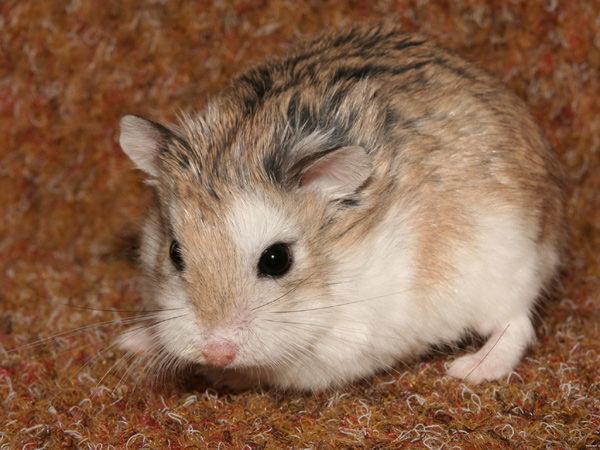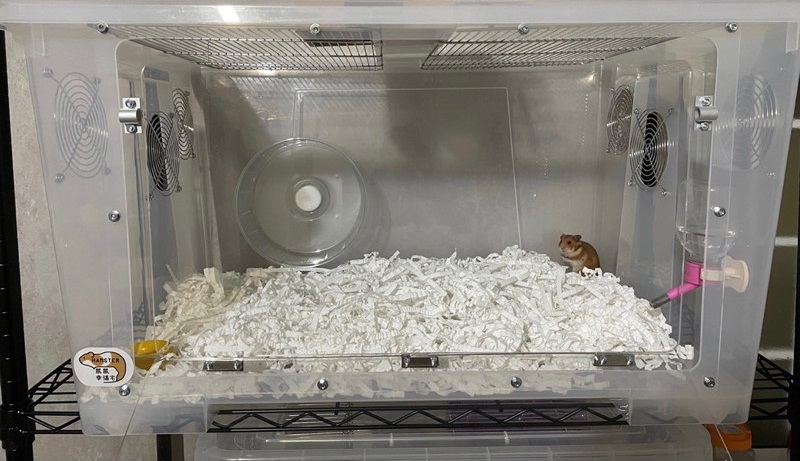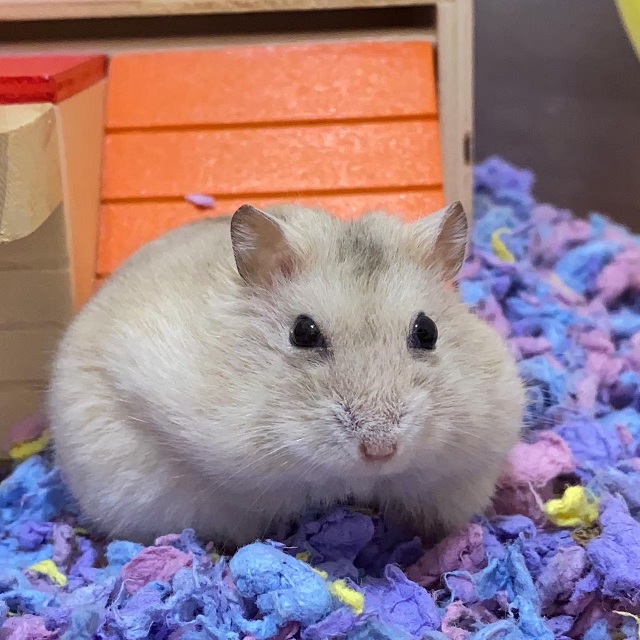Meet the Roborovski Hamster
Officially called the Roborovski hamster, this tiny dwarf species is often referred to as the “Granpa hamster” or simply dwarf hamster. It’s the smallest hamster breed, native to the deserts of Central Asia—such as Mongolia, Kazakhstan, and northern China—also known as the desert dwarf hamster. Its signature look includes a petite body and distinctive white eyebrow markings.

Traits, Behavior & Lifespan
- Size: 1.5–2 in
- Weight: 12–24 g
- Lifespan: About 3 years, sometimes up to 4
- Color: Sandy-colored back, white belly, and white eyebrows
- Behavior: Nocturnal, extremely active and agile. Uniquely social among hamsters—enjoys living in groups. They’re timid and not ideal for children or those who like holding pets frequently due to their small, fragile bodies.
- Note: Keep same-sex Roborovski hamsters together to avoid overbreeding.
Ideal Living Conditions
Recommended Temperature
71.6–82.4°F (22–28°C). Extreme heat or cold is harmful. Use ceramic hideouts or metal cooling plates in summer, and wrap a warm pack in a towel under the cage in winter. Never place the cage outdoors due to noise or weather — this can be fatal.
Read More: 8 Ways to Maintain Cage Temperature & Spot If It’s Too Hot or Cold
Cage Size & Setup
Despite being small, Roborovski hamsters are highly active and social, so they need space. Use a minimum 40×60 cm base, similar to that of a Syrian hamster. Avoid traditional wire cages, as these hamsters may squeeze right through the bars. Keep the cage away from drafts and direct sunlight to maintain a stable temperature.
Keep their environment quiet — they’re sensitive to noise and can easily be startled, which disrupts bonding progress.
Read More: 4 Types of Hamster Cages – Pros & Cons

Many modern hamster homes use large IKEA storage bins, which are spacious, portable, easy to clean, and customizable. Source:Shopee
Must-Have Accessories for Roborovski Hamsters
Hamster Wheel: Small body, but can run in larger upright wheels. Avoid flying saucer-style wheels.
Water Bottle: Must not leak and should be refilled every 2–3 days to avoid bacteria buildup.
Food Bowl
Hideouts: Options include ceramic houses, water-layered acrylic coolers, glass huts, wood, and cotton fabric. Choose safe designs with no sharp edges, small gaps, or harmful chewable materials.
Chew Sticks
Sand Bath: For grooming and parasite control
Temperature Control Tools: Cooling plates, heating pads, hamster heat lamps
Extras: Thermo-hygrometers, anti-chew bars, tunnels and enrichment toys
Read More: How to Choose Hamster Cage Size & Must-Have Furniture
Bedding Choices
Avoid cedar, pine, or compressed wood shavings due to harmful dust. Also avoid cotton, towels, or fabric, which may cause intestinal blockage or limb entanglement.
Best choices include dust-free, unscented paper bedding, or soft, unscented toilet paper. Hamsters love shredding it!
Read More: How Often to Change Hamster Bedding + Best Types & Thickness

Food & Dietary Warnings
Safe Foods
Along with commercial hamster pellets, you can feed:
Vegetables: Carrot, cucumber (limit due to water), broccoli, water spinach, mustard greens, napa cabbage, cabbage, bell pepper, pumpkin, sweet potato, alfalfa sprouts, sweet potato leaves, corn
Fruits: Choose low-sugar options, remove skin and seeds. Offer small amounts only — once per day
Apple, papaya, guava, peach, cherry, kiwi, strawberry, blueberry, cranberry, wax apple, dragon fruit, watermelon/pear (high in water), banana, cantaloupe
Grains & Nuts: Nuts, sesame seeds, flax seeds, cashews, peanuts (limit to 1 daily), cooked beans like black beans, soybeans, peas
Protein: Boiled egg, cooked chicken, dried mealworms or crickets (crispy and shrimp-like — hamsters love them)
Unsafe Foods
Avoid these — even small amounts may be toxic or dangerous:
Spices: Onion, garlic, ginger, leek, chili
Tomato leaves
Chocolate
Coffee and tea
Avocado
Fruit seeds (apple seeds, cherry pits — contain cyanide)
Citrus fruits
Cheese: Hamsters are lactose intolerant. If offered, give only tiny bits
Others: Mango, unripe bananas
Read More: Full List of Safe & Unsafe Foods for Hamsters (Fruits, Veggies, Grains)
Common Health Issues
Most health concerns are similar across hamster breeds. If you notice hair loss, appetite changes, or unusual behavior, consult a hamster-experienced vet.
Respiratory Infections: Runny nose, sneezing, labored or noisy breathing
Digestive Problems: Diarrhea or constipation, often due to diet, stress, or infection
Skin Issues: Mites, lice, fungal infections, dermatitis — signs include hair loss, redness, itching
Dental Problems: Overgrown teeth can lead to eating difficulties or oral pain
Tumors: Often occur in older hamsters; can be benign or malignant
Eye Conditions: Conjunctivitis, injuries — signs include swelling, redness, or discharge
Wet Tail: A serious condition in young hamsters marked by diarrhea and a wet tail; requires immediate vet care